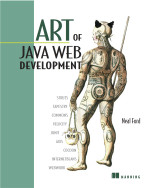Setting up my Fedora box with Out-of-the-Box
Rather than spending hours trying to recover my Red Hat 9 disk, I built a new disk/box with Fedora. For all I know, the RH 9 one is still recoverable, but I'm an upgrade junkie so I couldn't help myself. Setting up DHCP with Dynamic DNS was a bit of a pain, even when I followed this howto. I believe I ended up re-installing bind and everything worked (this was a 2 a.m. last night, so my memory is a big foggy).
The only thing I haven't been able to get running (so far) is my USB Printer, details on hpoj mailing list. It was easy to setup my OfficeJet G85 on RH 9.
As for setting up my dev environment, it was a breeze using Out-of-the-Box. However, out of the box the installer didn't work. I had to install "gd-devel" (a dependency of viewcvs) and then everything installed just fine. Hat tip to Eric Weidner (of EJB Solutions) for the tip. I was able to select the applications I wanted and get all of the following installed and running: MySQL, PostgreSQL, Apache, Tomcat, mod_jk2 (to connect apache and tomcat), Roller, Scarab, CVS, Java, Ant and ViewCVS. I'm sure I installed more, but these are the mains ones I was looking for.
While the installer for OBox takes a while to run (on 1.5 GB RAM with 1.5 GHz = 30 minutes), the beauty of OBox is that it configures everything for you and starts all the services. The one thing that is disappointing (or maybe it's good) is that it didn't setup any environment variables - no $CATALINA_HOME, $ANT_HOME, etc. No biggie, I can set those up myself.
I might just have to burn a CD of OBox for future clients. It'd be nice to show up with my development environment on CD and ready to go. One bug I did find was that the mod_jk2 install configures mappings for all the struts example apps (which I didn't install).


